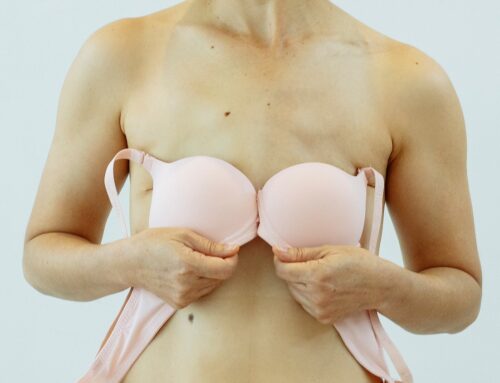Questions about the safety of your breast implants?
With some regularity, articles about the safety of breast implants appear in the media. Last week (Sept. 20), researcher Henry Dijkman published a paper stating that not only can breast implants with liquid gel release silicone particles (molecules), but so can solid breast implants. Among others, the television program Radar paid attention to this and some media even concluded that all implants would be dangerous. Such reports cause concern. Patients who are considering breast reconstruction after breast cancer or women who have taken breast implants for cosmetic reasons wonder about the safety and health risks.
The plastic surgeons at MOOI Clinic and the Dutch Society for Plastic Surgery (NVPC) understand these concerns, and we want to keep women as informed as possible. In this article, we address a number of frequently asked questions and respond to Dijkman’s research based on currently known scientific findings and literature.
What did Dijkman investigate?
Dijkman’s research shows that migration of silicone molecules within, inside and outside the capsule, also occurs also with so-called cohesive (solid) gel implants. The study describes that the researchers searched the Radboudumc pathology department’s database for the records of patients with breast implants where the capsules had been removed and examined over the past 34 years (from 1986 to the present). A total of 389 women’s hairstyles were viewed. In and just outside the capsule, silicone particles could be detected in a large majority. 46 women had prostheses with a cohesive gel (the standard in breast implants since 1996) and 343 old-fashioned implants that are much more fluid (and where leakage is more common). In both groups, equal numbers of silicone particles were found in the tissue immediately surrounding the prosthesis.
What does the Dutch Society for Plastic Surgery (NVPC) think about the study?
The NVPC and plastic surgeons are critical of Dijkman’s study because it is not a representative sample. In fact, the study only looked at the caps that were sent for examination at the Radboud (389 over a period of 34 years, while some 19,000 implants are placed annually). Capsules are also sent for surgery only if there is something special going on, such as severe thickening of the capsule or someone with symptoms. It is also not known how many implants were broken or intact upon removal, what was the health background of the women involved, and whether they smoked, for example. All this gives a distorted picture of the extent of the problem. Patients with no complaints and whose capsules were not sent were not included in this study. With that, it is therefore also impossible to say how often and how much silicone particles are released with cohesive implants. This response was also shared with JAMA, where Dijkman’s study was published.
Should I be worried now?
The question then remains whether and how harmful this is to health. However, whether the presence of silicone particles also causes (health) complaints and what the likelihood of this is has not been studied. The study only looked at the presence of these particles at the examined capsules. Therefore, the conclusions in the media are rather unsubtle. Large groups of women with breast implants have been followed for decades and compared with women without breast implants. In these studies, no clear differences in symptoms were found in the groups with and without implants. The presence of silicone in breast tissue is also not news: for years, among other things, this has been in the NVPC’s surgical leaflet silicone breast implants , which plastic surgeons use when educating their patients. Indeed, there are several studies showing that silicone particles are found in blood and even breast tissue even in women without breast implants. This is probably due to consuming food and beverages, which also contain these particles.
Are implants safe or not?
For as long as silicone breast implants have been used (since 1962), studies have been conducted to determine whether they are harmful to health. So far, so-called large cohort studies (comparing women with and without implants) have been unable to demonstrate a public health hazard. In America, the use of silicone breast implants for cosmetic treatments was banned by the FDA (the U.S. Public Health Inspection Service) in 1992 in order to conduct more research. After 14 years of investigation, the FDA stated in 2006 that there was no evidence that silicone breast implants were unsafe and their use was allowed again. The Netherlands Healthcare and Youth Inspectorate (IGJ) also says there are no reasons to ban the use of silicone breast implants. Read more about implant safety on the IGJ website here.
Misunderstood complaints
At the same time, some women with breast implants do have symptoms for which there is no obvious cause. This group often feels very misunderstood. Despite much research being done on what is also called breast implant illness (BII), BII is not (yet) a recognized disease. It is suspected that the risk of developing symptoms is less than 1 percent. Complaints described in BII are atypical symptoms such as fatigue, forgetfulness, hair loss, muscle pain, brainfog, etc. That makes it very difficult to investigate; the symptoms are so general and broad that they can have all sorts of causes unrelated to breast prostheses. A study published this year by Maastricht UMC found that these symptoms were just as common in women with silicone implants as in those without.
More research
We take all complaints and investigations extremely seriously and follow all developments closely. The NVPC also advocates for more research on breast implant safety and is involved in several (multi-year) studies along with the RIVM and the NIVEL. These studies focus, among other things, on whether misunderstood symptoms are more common in women with silicone breast implants than in women without, and which women, if any, are more at risk for these symptoms. In other words, can we find risk factors that predict symptoms? These may include factors in the patients themselves such as smoking, allergic predisposition, already having an autoimmune disorder or prosthetic factors such as a broken prosthesis, age of the prosthesis (length of time they have been in the body). For now, the NVPC sees no reason to adjust its views and opinions.
Women with breast prostheses, who nevertheless have concerns or think they have symptoms due to their breast implants, can always make an appointment at MOOI Clinic.








